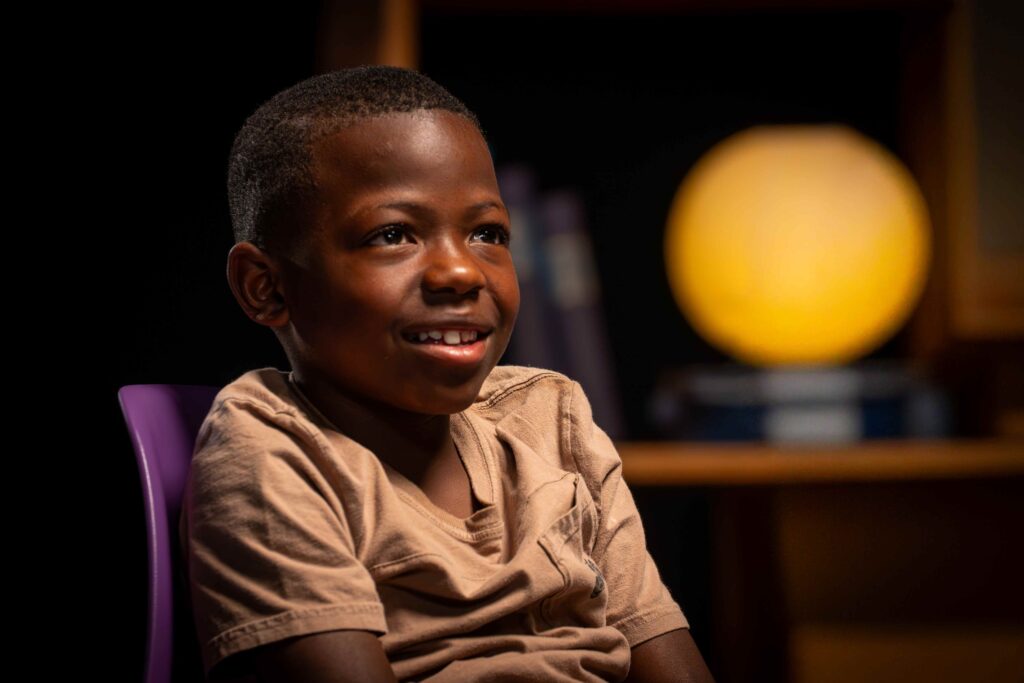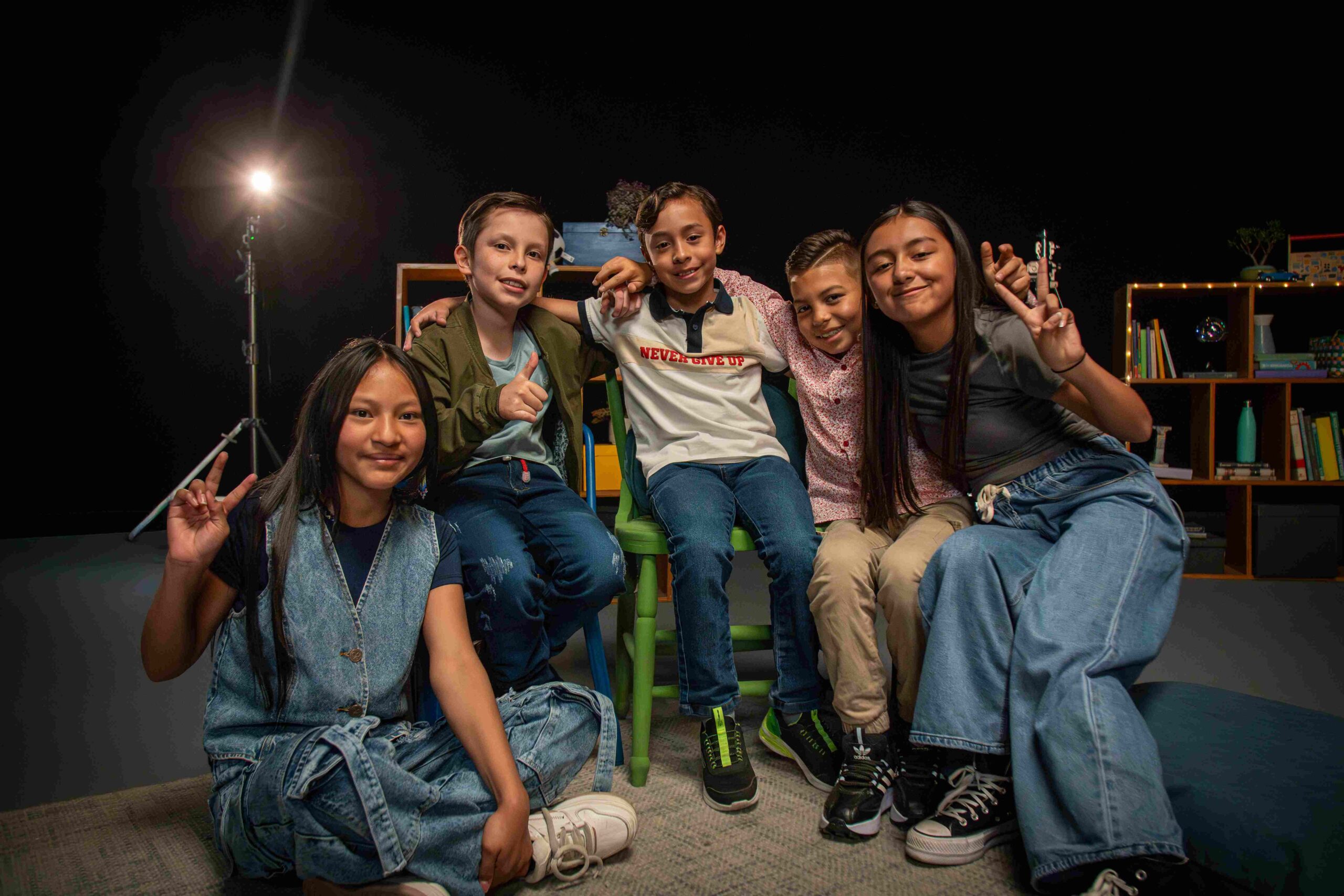Evidence-based strategies show how schools in Latin America and the Caribbean can reduce bullying and violence by creating protective environments.
- One in three students suffers bullying or violence at school.
- Preventing violence in schools involves creating environments that serve as protective factors.
- Positive Youth Development is built on three pillars: safe school environments, social-emotional development, and supportive relationships.
“It’s like taking a candle and slowly putting it out, covering it, and when you finally cover it, the light goes out, like the light of a person’s soul.” This is how Salomé, an 11-year-old Colombian girl, describes the experience of suffering bullying. Her testimony is part of a social experiment in which we invited children from the region to reflect on situations of violence that frequently occur in schools. In the end, they all reached the same conclusion: violence is learned. So is peace.
Unfortunately, Salomé’s experience is not isolated. One in three children has suffered physical or emotional violence at school. The spaces that should provide refuge for learning and development have become places of fear and exclusion for millions of children in Latin America and the Caribbean. Bullying, discrimination, and peer violence erode not only academic performance but also the mental health and sense of belonging of an entire generation.
But school violence is not inevitable. At the Inter-American Development Bank (IDB), we promote an evidence-based approach that seeks to transform schools into protective spaces: places where preventing violence is not reduced to punishing behaviors, but to systematically building cultures of care, developing socioemotional skills, and strengthening trusting relationships.
A Paradigm Shift: From Punishing to Caring
The IDB promotes a comprehensive approach to preventing school violence beyond disciplinary protocols and sanctions. This model is based on a powerful premise: it’s not about changing who young people are, but about expanding their opportunities to thrive.
Preventing violence doesn’t mean applying isolated disciplinary measures when an incident has already taken place. It means designing schools where violence is less likely to occur, because the climate, relationships, and skills of the entire school community act as protective factors. In practical terms, it’s moving from expelling to supporting, from punishing to teaching, from reacting to preventing.
This approach, known as Positive Youth Development (PYD), is built on three fundamental pillars: safe school environments, socioemotional development, and supportive relationships. These pillars translate into five concrete and replicable components that can potentially transform children’s school experience . Below, we explore how each one works in practice.
Five Strategies to Transform Schools into Violence-Free Spaces
1. Build a Positive School Environment
Replace punishment and control with a culture of care, mutual respect, and shared norms.
Why it matters: Students learn better when they feel emotionally safe. A positive school environment reduces anxiety, strengthens the sense of belonging, and creates conditions for everyone to thrive.
In practice: Instead of expelling a student who acts violently, schools implement restorative responses where the harm caused is repaired and solutions are built together. Conflict becomes a learning opportunity, and the classroom transforms into a space where empathy, cooperation, and mutual respect are shared norms that everyone practices.
2. Strengthen Socioemotional Skills
Integrate socioemotional learning into daily school routines, teaching students self-regulation, conflict resolution, and empathy.
Why it matters: These skills protect against violence and strengthen the well-being of the entire school community. A student who knows how to identify and regulate their emotions is less likely to react aggressively when facing frustration. You can learn more about the importance of socioemotional education here.
In practice: The Positive Action program, developed in Belize, integrated daily lessons where students and their families practiced self-regulation, empathy, and peaceful conflict resolution skills. These skills were not taught in isolation but rather were integrated into the daily classroom interactions. Results show that students develop greater capacity to regulate their emotions and act prosocially, even in tense situations. The program strengthens peer support and solidarity as protective measures against aggression.
3. Cultivate Trusting Relationships
Train teachers to act as trusted adults, not just authority figures, using mentoring, regular meetings, and active listening to identify early signs of distress or bullying.
Why it matters: Many young people who suffer from or perpetrate violence don’t have a trusted adult to turn to. A teacher who listens and accompanies can be the difference between a crisis that escalates and a situation that is resolved before causing greater harm.
In practice: Schools train teachers in active listening and early detection of vulnerability signs: sudden behavior changes, isolation, and signs of distress. The teacher builds bridges with the most vulnerable students, ceasing to be just an authority figure to become an ally for their development. This accompaniment allows intervention before situations escalate.
4. Engage Families and Community
Extend prevention work beyond the school doors by including parents and caregivers through workshops, dialogue circles, and collaboration with social services when serious risks are detected.
Why it matters: Violence prevention doesn’t stop at the school door. There needs to be coherence between what young people experience at home, in their neighborhood, and in the classroom. For example, in Jamaica, the IDB has supported a PYD program that brought together schools, families, and community leaders with shared strategies to create protective environments for youth.
In practice: Schools organize workshops with families on peaceful conflict resolution and positive parenting, establish dialogue spaces between parents and teachers, and coordinate with social services when risk situations require specialized support. The school becomes part of a broader protection network, where all significant adults in the student’s life work with coherent messages about respect, care, and nonviolent conflict resolution.
5. Prevent Through Early Identification
Implement school tools to identify students at risk early (for example, absenteeism, sudden isolation, behavior changes) and replace punitive suspensions with restorative responses and personalized psychosocial support.
Why it matters: Expelling a student who perpetrates violence doesn’t solve the problem; it transfers and worsens it. The student is left without support and with a greater likelihood of engaging with violent environments outside of school.
In practice: Schools implement tools for early identification of at-risk students, and monitor for absenteeism, sudden isolation, or behavior changes. This strategy recommends restorative responses and personalized psychosocial support instead of punitive suspensions.
Belize and Its Positive Development Approach Against Violence
Belize implemented the Positive Action program in 24 primary schools. The study, which included 4,575 students between ages seven and 12, used a rigorous experimental design: 12 schools participated in the program, 12 served as controls.
The results were compelling. Younger students (ages seven to nine) significantly improved their prosocial behavior and self-control. Older students (ages 10 to 12) exhibited a positive profile across multiple dimensions: stronger moral beliefs, better emotional regulation, and positive peer affiliation. Most importantly, children develop a greater capacity to reflect on their actions and avoid negative behaviors, a crucial skill in environments with high exposure to violence.
These findings, published in the International Handbook on Adolescent Health and Development and in the journal Educational Psychology, confirm that prosocial behavior is malleable. Even in vulnerable contexts, schools can teach peace systematically and with measurable results. This study demonstrates that investing in positive youth development can change trajectories even in the most challenging contexts.
How to prevent violence in schools? Lessons learned
1. Integrate positive development and socioemotional skills into national curricula: not as an “extra subject,” but as a cross-cutting axis of education. Socioemotional skills should be as much a priority as literacy or mathematics, because without them, academic learning is compromised and student well-being is at risk.
2. Start early: evidence collected from the Think Equal program in Colombia, which taught socioemotional skills to children ages 3 to 6, shows that teaching these skills from a young age brings enormous benefits: positive effects are achieved in children’s prosocial behavior, their self-awareness, and cognitive learning.
3. Strengthen teacher training: train teachers in nonviolent conflict management, de-escalating tense situations, socioemotional learning, and active listening. Teachers are not just content transmitters; they are change agents capable of transforming their students’ school experience. They need tools, ongoing support, and recognition to fulfill that role.
4. Monitor well-being, not just performance: without emotional well-being, there can be no quality learning. Therefore, it’s necessary to monitor the development of skills linked to students’ positive development and not just scores on standardized tests associated with academic performance.
Violence Is Learned. So Is Peace: Building an Education for Peace

As these children explain, violence prevention can start at school.
Every school can be a space where students learn to resolve conflicts with empathy, build relationships based on respect, and develop their full potential. We need protective schools, where peace is a goal cultivated with intention, evidence, and sustained commitment.



Learn more at the Skills for Life Initiative website and stay tuned for our upcoming content.


Leave a Reply